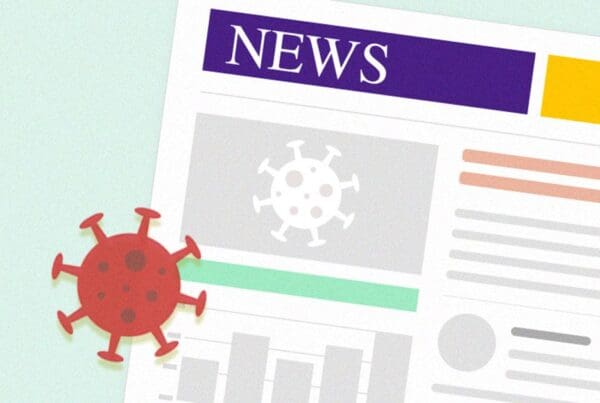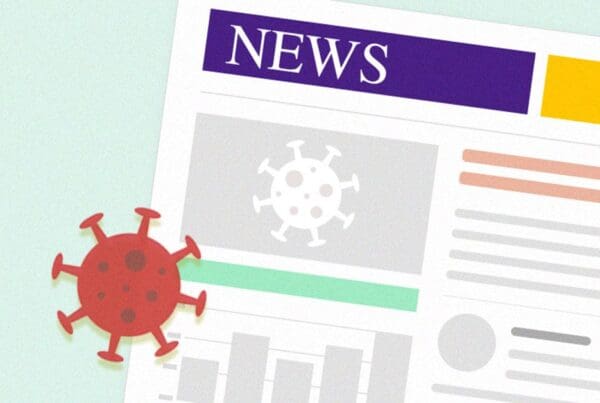The summer season is looking a lot different this year. I hope everyone is still able to take some time off and enjoy these sunny days while they last. If you have not already done so, now is the time to transition from “emergency” mode to something more sustainable for both your work and personal life. During a recent interview, Dr. Jeff Duchin, Health Officer for Public Health – Seattle & King County and a professor at the UW School of Medicine, commented that, “We need to fundamentally rethink the way we go about our lives … and to reset our expectations about when we might get back to our pre-COVID lifestyles.” As we are doing with masking, we have to find the “normal” in this new environment, and that includes taking time to be with our families, to rest and to recharge, within the constraints needed to control the pandemic. Pending some remarkable development, we are still closer to the beginning than the end of this experience.
Gov. Jay Inslee has announced that pausing any ease on coronavirus-related restrictions in Washington counties is extended indefinitely, and we have seen COVID-19 cases rising, especially in the central counties of our state. Overall, Washington state remains stable with a 5.7% positivity rate even as we see higher rates in Okanogan (17%) and Chelan (10%) counties. For those curious as to why the Governor made the “mini” rollback, I recommend taking a look at the Institute for Disease Modeling Situation Report 9 to see where Washington is compared to Florida. What I take away is that unless we keep up with physical distancing and masking, our state could look more like Florida in the future. That is something that we all do not want to happen.
Another hot topic is what to do with people who continue to test positive for COVID-19 weeks after recovering. Are they still infected? Can they give the infection to another person? We are still working to understand why this happens, and I’ll dig deeper into this issue in today’s message.
Updates for today:
- UW Medicine COVID-19 Activity
- Local/National/Global Epidemiology
- The Persistently Positive COVID-19 Patient
- Eye Protection Policy Updates
- Masking Enforcement and Exemptions
UW Medicine Hospitals COVID-19 Activity

Local/National/Global Epidemiology
Washington: The Department of Health reports 55,803 cases and 1,564 deaths as of July 29. Of the 973,654 people who have been tested, 5.7% have been positive.
United States: The Centers for Disease Control and Prevention reports 4,405,932 COVID-19 cases and 150,283 deaths as of July 30.
Global: The WHO COVID-19 Situation Report for July 30 reports 16,812,763 confirmed COVID-19 cases and 662,095 deaths.
The Persistently Positive COVID-19 Patient
The Centers for Disease Control and Prevention (CDC) no longer recommends testing as a way to determine discontinuation of transmission-based precautions (Contact/Droplet or Airborne/Droplet) and discharge of hospitalized COVID-19 patients. We often see patients who recover from the infection and continue to have a positive test for weeks or even months. Why is this happening? It is not totally clear, but we see a similar pattern with some other respiratory viruses, like influenza. It may depend upon how much a patient’s immune system responds, or fails to respond, to the infection or possibly how sick a person is with the infection. One clue is that when people are weeks out from their infection and have another positive test, what we see over and over is that the molecular test has to go through many more cycles of amplification (“cycle time”) to detect the virus. This means that the test is picking up very, very small amounts of viral genetic material that appears to be “left over” and not capable of being transmitted to another person.
Why does this matter? The most important thing we have learned is that people, even with a positive test, are no longer infectious after 10 days if their symptoms (especially fever) resolve. We have been using the CDC’s time + symptom-based approach in the outpatient setting for several months with no issues. This means that after a minimum of 10 days, people leave home isolation as long as they are feeling better and have not had a fever for at least 24 hours (it was 72 hours but was recently decreased). The challenge is that these repeat positive tests can delay care, like surgery, or discharge to a congregate facility that may require that patients have more than one negative test.
Fortunately, the CDC has provided another updated guideline that recommends moving to a time + symptom-based approach for inpatients as well. This would allow us to stop requiring a negative test to discontinue “COVID” precautions after a minimum period of time and would avoid the challenge of what to do with persistently positive patients. The UW Medicine Infection Prevention Team is reviewing this guideline and will be discussing with the community in the coming weeks. Until then, there are no changes to the discontinuation of precautions process.
Eye Protection Policy Updates
As a reminder, UW Medicine launched protocols this week requiring staff who work directly with patients to wear eye protection, in addition to a mask, at all times.
To support these changes, our Supply Chain colleagues have sourced a number of product options to help your teams access the appropriate level of protection for your units. Please refer to the universal eye protection product guide for details. Bringing in eye protection (goggles or face shields) from home or outside your clinic or hospital is not permitted at this time. Personal eyeglasses on their own also do not meet policy guidelines.
For more information on eye protection, please see the policy and FAQs.
Masking Enforcement and Exemptions
Some of our healthcare providers are receiving requests from patients for a medical exemption from wearing a mask. There are limited cases when exemptions are appropriate. If your patient asks for an exemption but does not qualify, please decline the request and feel free to reference the Washington State Department of Health’s order regarding mask wearing.
Thank you, as always, for your commitment to the safety of the community. As someone who is reviewing COVID-19 data, trends and media on an hourly/daily basis, I know how crazy and overwhelming this situation can be. At the same time, I believe that information is empowering, so please let me know what you want to hear more about. We are learning more every day about this coronavirus disease, and that means change is inevitable. Your collaboration and flexibility are essential and always appreciated.
Sincerely,
John Lynch, MD, MPH
Medical Director, Infection Prevention & Control
Associate Medical Director, Harborview Medical Center
Division of Allergy & Infectious Diseases, UW School of Medicine

